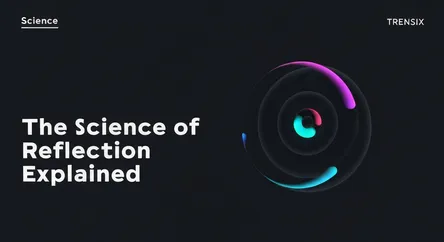Science
The Science of Reflection Explained

Discover the science behind reflection, the principle that allows us to see the world, from mirrors to advanced optical technologies.
What is it?
In physics, reflection is the change in direction of a wave when it bounces off a surface. This phenomenon isn't limited to light; it also applies to sound, water, and other types of waves. The fundamental principle governing this is the law of reflection, which states that the angle at which the wave hits the surface (angle of incidence) is equal to the angle at which it bounces off (angle of reflection). There are two main types of reflection. Specular reflection occurs on smooth, shiny surfaces like a mirror, creating a clear image. Diffuse reflection happens on rough surfaces, scattering the light in many directions and allowing us to see objects that don't produce their own light.
Why is it trending?
While a foundational concept, reflection is constantly trending due to its critical role in technological innovation and scientific education. Advances in optics, lasers, and fiber optics are entirely dependent on controlling the reflection of light. Furthermore, its principles are fundamental in developing new materials with specific reflective properties for applications ranging from stealth technology to energy-efficient buildings. In education, reflection is a cornerstone of physics, and educators are finding new ways to teach wave behavior. Understanding reflection is also crucial for technologies like sonar, radar, and astronomical telescopes that explore the universe.
How does it affect people?
Reflection is integral to our daily experience of the world. Our ability to see non-luminous objects is due to diffuse reflection, where light from a source like the sun bounces off objects and into our eyes. Mirrors in our homes and vehicles work because of specular reflection. The principle is also used in a vast array of technologies. Rear-view mirrors in cars use reflection to keep us safe. Microscopes use mirrors to illuminate specimens, while reflecting telescopes use large curved mirrors to gather light from distant stars. Even everyday technologies like cameras and projectors rely on the precise control of reflected light to function.